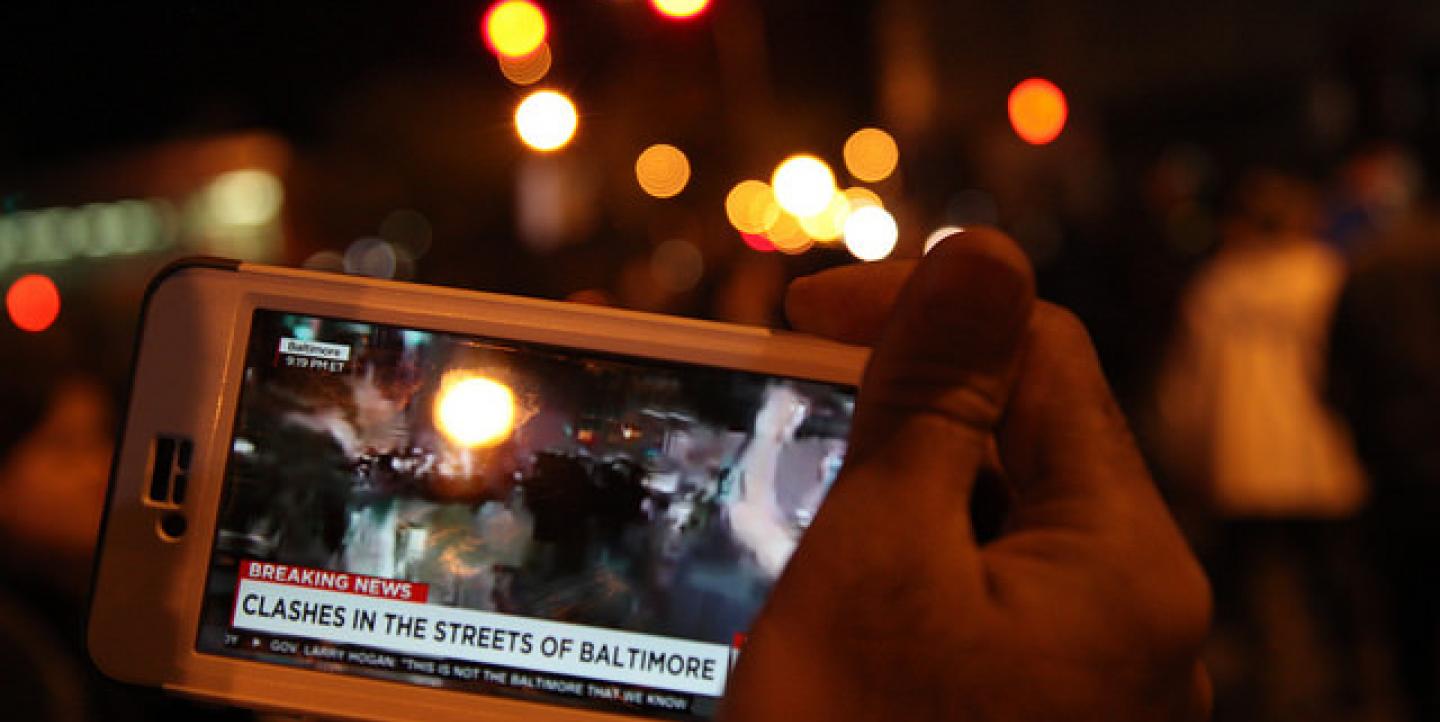The world watched this week as Charm City became anything but. Riots broke out. Looting was rampant in sections of the Maryland city. Some residents became angry and violent, lashing out in the wake of 25-year-old Freddie Gray’s death while in police custody.
And as this happened, journalists from publications and networks large and small covered the action as it unfolded. Some did so on air, interviewing bystanders live, and others with pen and paper, writing about the tension and chaotic scenes around them.
In certain ways, reporting is reporting no matter the story. But there are also special considerations to keep in mind when covering a more dangerous, volatile news event like a massive protest or riot. I talked to two journalists with different vantage points on the issue to get their advice and takes on the do’s and don’ts of coverage.
Paul Lewis, a D.C. correspondent for The Guardian, was dispatched to Baltimore on Monday. He not only wrote a handful of articles from the scene but also took to the livestreaming app Periscope to document the buildup to the city’s curfew via video. Lewis also has reported on riots in the U.K. in 2011 and was on hand in Ferguson, Missouri.
David Francis is an international reporter whose primary medium is writing for print and digital publications such as Foreign Policy, The Christian Science Monitor and the Financial Times. Though he wasn’t on the ground in Baltimore this week, he has reported from conflict zones and covered tense breaking news events in Nigeria, Kenya and other countries abroad.
Here are their combined tips for journalists working in similarly riotous and conflict-heavy situations:
Have an escape route
Always know a way out. Getting stuck in the middle of a crowd is potentially very dangerous, Francis advises, so “always know how to escape a situation and know before you go in.”
To this point, Lewis suggests parking relatively close to the thick of the action to be able to flee in a hurry but not so close so that you can be tangled up in any physical altercations.
Be as discreet as possible at the scene
Try not to make your presence obvious, according to Francis. “As someone who primarily works in print, this is easier. The less you do to stir up an already volatile situation, the better,” he adds.
Carry as little as possible but enough to keep you safe
Francis says he tends to carry little more than a notebook and recorder, which makes it easier to do interviews. “A camera is bound to make your presence obvious and can anger people who don't want to be photographed,” he says.
Lewis says he keeps a bike helmet or other head covering on hand as well to physically protect himself. Certainly not having to lug a large camera or being part of a massive entourage -- as some cable news reporters and anchors must do -- is an asset. Batteries, too, are a must to keep recorders and phones charged up. And he keeps his press card in his back pocket. Sometimes this comes in handy to show, sometimes not.
Connect with a local, and be sensitive to the local community overall
When Francis is reporting abroad, in particular, he says he always hires fixers who know his interview subjects well and “can calm things down if situations turn tense.” Gaining local trust or tapping into citizens’ expertise is a tactic that is helpful domestically too. Lewis says he tries to be understanding, above all.
Trust your gut
If something feels wrong, Francis says, get out. “There's a reason your body is telling you something is off.” And when it comes to deciding who to approach at the scene for comments or information, Lewis sees no alternative to counting on basic intuition.
Don’t stand by too passively
Even while assessing the situation, Lewis stresses that there’s a job to be done. “You’ll never get any good material by standing back.” In his experience people are generally receptive to cooperating, providing observations and context and being questioned about what they’ve experienced and seen. It helps them make sense out of what’s occurring.
There's no such thing as being overly cautious, however
Things can go from calm to dangerous in a heartbeat, Francis warns, so stay aware and don’t take unnecessary chances. Lewis agrees that the mood and atmosphere can switch quickly. Everything’s volatile, including how the public feels about journalists being there. He says sometimes this is because they fear their city will be misrepresented or they’re generally afraid and tense and it has to land somewhere.
Other resources for covering riots and protests include NewsLab's disaster coverage tips, MinnPost's guide on covering riots and the National Security Zone's security guide for hostile environments.
Image CC-licensed on Flickr via Arash Azizzada

